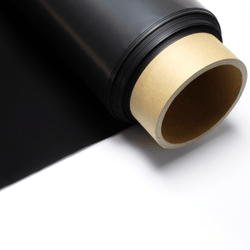In stock, ready to ship!
Fineshut KIWAMI is a special upgrade Fineshut SP that improves the surface shape and further improves the anti-reflective performance. It is formed of asperities like light shielding grooves and absorbs light emitted from the direction perpendicular to the grooves.
If you need custom cut parts like on the photo, please contact us for a quote!
Why Fineshut KIWAMI?
- Upgraded Fineshut SP
- Best anti-reflection performance in the near IR region
- NO hair loss problems specific to flocking
- Comply with RoHS 2.0 regulations
Especially in the near infrared region, it has the best anti-reflection performance among our materials we handle, and achieved a total hemispherical reflectance of 1% or less in a wide wavelength range of 250 to 2000 nm. This amazing performance is achieved with a thinness of only 0.37 mm.
The base material is fine urethane foam similar to Fineshut SP, so it retains its features such as durability and ease of handling. There are no hair loss problems specific to flocking and large reflections in the near infrared range, and even with a slight contact like plating and deposition coating, gloss is generated and performance does not deteriorate significantly. We also comply with RoHS 2.0 regulations.

Live shot comparison with other anti-reflective material

Here are two images taken with a normal camera and a near infrared camera. You can compare and confirm the stable anti-reflection performance of Fineshut KIWAMI.


Applications
- Suppress stray light for optical device
- Absorption of scattered light by laser processing machines
- Non-reflective table for 3D scanning
- Work bench mat for assembly and visual inspection
- LiDAR target
- Still life photograph's background
It is also recommended for mount adapter.

Product Specifications
Thickness
Total 0.42mm ± 0.05 mm
(Fineshut KIWAMI 0.37 mm + Thinner Adhesive tape 0.05 mm)
Caution on use
In order to maximize the light absorption effect by the groove shape on the surface, please make sure that the direction of the grooves are perpendicular to the light source.

There is light transmission due to microfoaming and grooves, so it can not be used for shading applications.




























